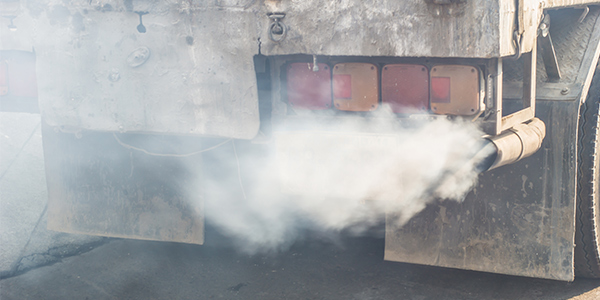New York state hopes to adopt medium- and heavy-duty zero-emission vehicle (M-HD ZEV) standards by the end of this year.
The New York State Department of Environmental Conservation (DEC) on Wednesday presented its plan for a rulemaking on the standards in a session with stakeholders. The rulemaking would build on the state’s commitment last year to address M-HD emissions through coordinated action with 14 other states.
Jeff Marshall of the DEC’s Air Resources Board said the department anticipates publishing a proposed rulemaking by June and adopting a final rule by December. Under that timeline, he said, the rule would be effective for the 2025 vehicle model year, which can start as early as January 2024.
New York would adopt California’s M-HD ZEV standards, also known as advanced clean truck (ACT) standards, under existing New York regulations on emission standards for motor vehicles. The M-HD ZEV standards are similar to a light-duty ZEV program already in effect in New York.
The Clean Air Act allows states to adopt California’s more stringent standards instead of federal standards. Marshall said that New York first adopted the California motor vehicle emissions program starting with the 1992 model year for light-duty vehicles. The new rulemaking would expand on several iterations of standards New York has adopted since then.
Last year, New York signed a multistate M-HD ZEV memorandum of understanding that suggested states consider adopting California’s ACT standards. The DEC also plans to add to the rulemaking California’s omnibus heavy-duty low oxides of nitrogen (NOx) standards and Phase 2 greenhouse gas standards, which advance the M-HD emissions reductions originally set by the federal heavy-duty national program, or Phase 1 GHG standards.
ACT
The ACT standards have an original equipment manufacturer annual sales requirement that ensures car makers are placing a target number of vehicles for sale in New York each year. Marshall said that the sales requirement increases annually, with a goal of having 100% ZEV in the applicable vehicle classes by 2045. Manufacturers can earn credits for vehicles that comply with the regulations and use those credits for flexibility on future requirements.
In addition, the standards have a one-time, large entity reporting requirement for organizations that meet specific M-HD ownership criteria. Those entities include businesses with more than $50 million in annual revenue and at least one M-HD vehicle as well as state and local governments with at least one M-HD vehicle. The one-time report submitted by the covered entities would provide the DEC with information on existing use cases and gaps in EV infrastructure to inform future rulemakings, Marshall said.
Omnibus Standards
The omnibus heavy-duty low NOx standards that the DEC is considering apply to exhaust emissions for vehicles over 10,000 pounds with heavy-duty diesel engines. They would set heavy-truck NOx emissions at 0.05 grams per brake horsepower-hour (g/bhp-hr) through model year 2026 and 0.02 g/bhp-hr in model year 2027. The standards also set heavy-truck particulate matter emissions at 0.005 g/bhp-hr starting in model year 2024.
Useful life and warranty requirements are included in the omnibus standards.
“Diesel engines last a long time, and you want the emission control portion of the engine to last a long time as well,” James Symon of the DEC Air Resources Board said during the stakeholder presentation. “A warranty would ensure that the engine emission control system is free from defects and make sure that the equipment is durable and lasts throughout the useful life of the vehicles.”
Phase 2 Standards
The Phase 2 GHG standards that the DEC also plans to add to the rulemaking are based on California’s version of the federal Phase 2 standards. The increased M-HD emissions reductions under the federal Phase 2 GHG standards apply through model year 2027 and vary by vehicle type.
Symon said that while California’s standards are aligned with the federal standards, they include a group of additional stipulations. California’s standards include, for example, a credit adjustment to incentivize use of low-global-warming-potential refrigerants and advancements in minimum ranges for plug-in-hybrid electric vehicles.
Comment Period
Although the DEC is not in a formal comment period for the planned rulemaking, Marshall said it is seeking input from stakeholders on the potential regulations. He encouraged interested parties to submit comments by March 10.


